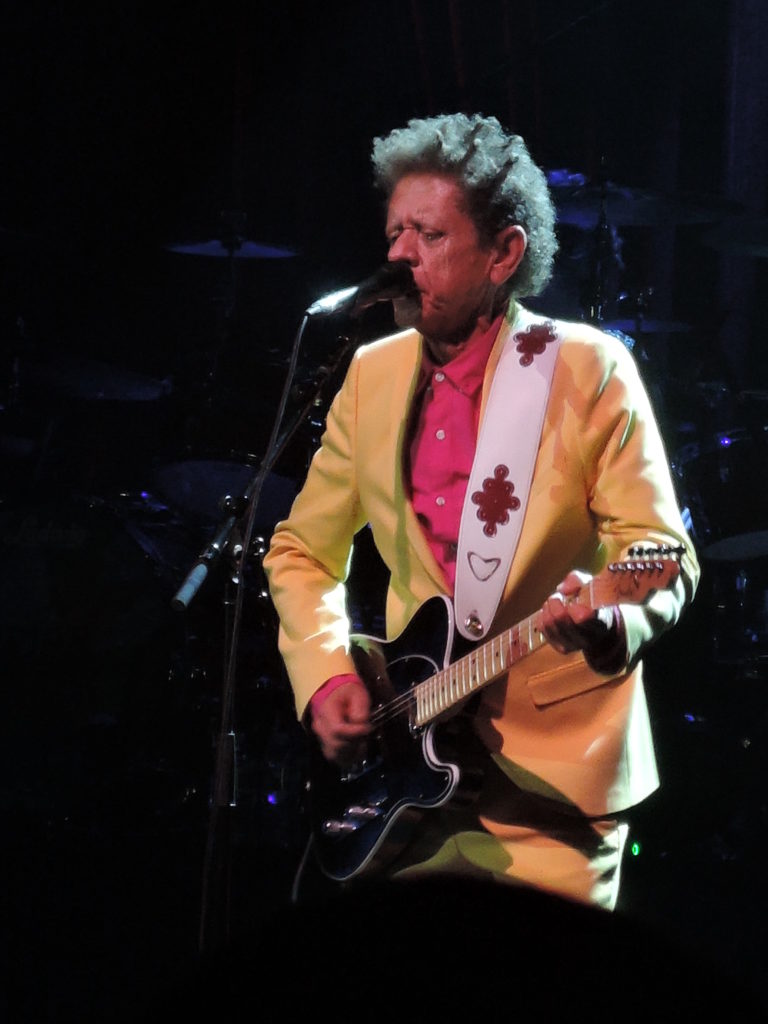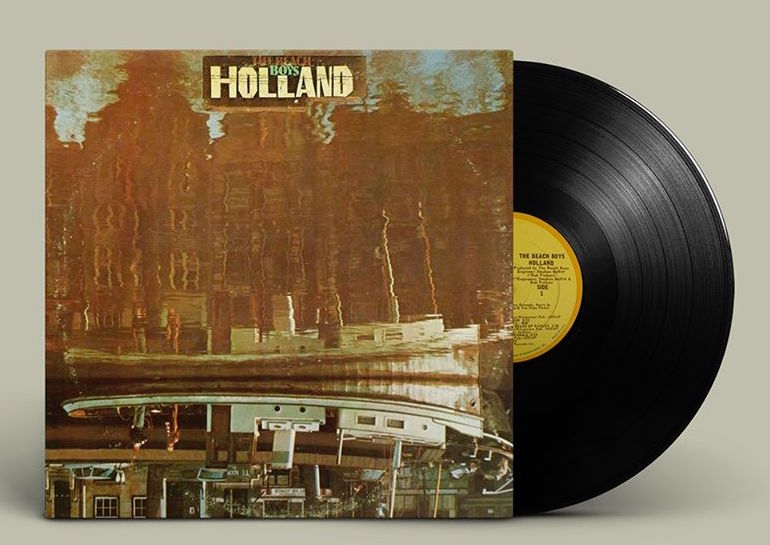On Jan. 8, 1973, the Beach Boys released the “Holland” album, which included the hit “Sail On, Sailor,” featuring Blondie Chaplin on lead vocals. Here is an excerpt from a chapter in The Vinyl Dialogues Volume IV: From Studio to Stylus that includes an interview with Blondie Chaplin about the making of the “Holland” album and the back story on how he was chosen to sing lead on “Sail On, Sailor.”
After spending about three months recording in Holland over the summer of 1972, the Beach Boys had returned to the United States thinking they had finished their 19th studio album.
But when they presented the album — called Holland — to Warner Brothers, record company officials rejected it because it didn’t appear to the suits that it had a song that could be marketed as a potential hit single.
Beach Boys co-founder Brian Wilson had co-written another song — along with Van Dyke Parks, Ray Kennedy, Tandyn Almer and Jack Rieley — that Parks, then the director of audio-visual services at Warner Brothers and a longtime collaborator of Brian Wilson, thought might allay the concerns of record company officials.
The thinking was that the song “We Got Love,” which record company officials considered the weakest of the tracks on the Holland album, could be replaced with the new song, which could then be released as a single.

(Photo by Mike Morsch)
So Brian Wilson’s brothers, Carl and Dennis, along with guitarist Blondie Chaplin and drummer Ricky Fataar, went back into the studio in Los Angeles and recorded the song.
Chaplin and Fataar, both South African natives who were with a band called the Flames, had joined the Beach Boys in 1971 at the invitation of Carl Wilson, to infuse some new blood into the band that in the early 1970s was trying to make over its image and struggling to maintain its relevance.
“On the original track, I played bass, Ricky played drums and Carl was on the electric piano. It was just the three of us,” said Chaplin. “Then Carl asked Dennis to sing the lead. Dennis took one pass — not even a pass really — and said ‘Carl, this is not for me. It doesn’t sound good for me. And by the way, the surf is up and I’m going surfing.’ That was it. It wasn’t weird or anything, it was just Dennis. He just said, ‘Hey, I’m going to surf now.’
“Then Carl sang it, and it sounded good to me. But he didn’t like the timbre of his voice on it. So he asked me to give it a shot. I sang it twice and that’s what you hear on the album. That’s how I got a chance to sing it,” said Chaplin.
The song was “Sail On, Sailor,” and it was released as a single off the Holland album in 1973. The album itself was critically well-received at the time, peaking at No. 36 in the U.S. on the Billboard 200 Albums chart and No. 20 on the United Kingdom Top 40 album chart.
“Sail On, Sailor” only made it to No. 79 on the U.S. Billboard Hot 100 Singles chart when it was first released. But it was re-released two years later, in 1975, and reached No. 49 on the Billboard Hot 100 Singles chart.
Chaplin and Fataar contributed more to the Holland album as well, co-writing the song “Leaving This Town” with Carl Wilson.

(Photo by Mike Morsch)
“It was great to be in Holland for three months just trying to make some music. It was a good album,” said Chaplin. “I just know one thing: I’ve always felt that Carl got us in there for new blood and was willing to go and give it a shot to make something new go down, develop a new kind of personality for the band. The album had some problems when it first came out because record company officials couldn’t find a hit song.
“But ‘Sail On, Sailor’ was it. We cut ‘Sail On, Sailor’ and put it on the album so we could have a little bit of wings on the radio. That’s how that came about. But now when you listen to it as a whole album, it plays pretty good,” said Chaplin.
A reviewer for Rolling Stone agreed with Chaplin’s assessment of the Holland album.
“In acknowledgment of Brian Wilson’s still honored if slightly mythological status, even within the group, the album both opens and closes with a new Brian opus. As usual, each is informed by a singular sensibility that, currently, seems inclined toward a kind of chamber rock,” wrote Jim Miller in the Rolling Stone review first published on March 1, 1973. “Blondie Chaplin’s superb vocal on ‘Sail On, Sailor’ situates that song between recent Stevie Wonder and vintage Beach Boys, although the expansive harmonies and insistent triplets ultimately assert the group’s own rights.”
Miller continued: “Like the finest Beach Boys’ work, Holland makes me consistently smile, as much at its occasionally unnerving simplicity of viewpoint as at its frequently ornate perfection. Although the Beach Boys may be an acquired taste, once the listener has granted them their stylistic predilections, their best records become irresistible. Their music long ago transcended facile categorization, and they now play what might as well be described simply as Beach Boys music. Unlike last year’s disappointing So Tough, Holland offers that music at its most satisfying. It is a special album.”
Chaplin would leave the Beach Boys in 1976. He recorded a self-titled solo album for Asylum Records in 1977 and, in the 1980s, toured with The Band. In the 1990s, Chaplin was a guitarist, backing vocalist and percussionist for the Rolling Stones, both on tour and in the studio.
More than 40 years after recording the Holland album, Chaplin rejoined Brian Wilson and Al Jardine on an extended tour that celebrated the 50th anniversary of Brian’s masterpiece Pet Sounds album. During that tour, Chaplin had the opportunity to once again sing “Sail On, Sailor” live, even though the song appeared on the Holland album and not the Pet Sounds album. It was an opportunity for Brian Wilson to salute Chaplin’s contributions to the Beach Boys from years ago and it went so well that Chaplin is still touring with Wilson and Jardine as of 2020.
“It gives me a big old chuckle because I wouldn’t have thought so 40 years ago,” said Chaplin on if he believed he would still be singing the song. “I really wouldn’t have thought I’d still be talking about how ‘Sail On, Sailor’ came about. But I guess it’s become a classic, and newer fans want to know more things about it. I would have never thought, ‘Hey, man, this is going to stand the test of time.’ Not at all. It was like, ‘OK, I’m going to sing this song, let me try to sing it good and that’s it.’
“I don’t know if I had been doing it every night for the past 40 years if I’d feel that way. But now, it’s nice and fresh and clean and has a harder edge when we do it live and has a stronger back beat blues thing. I’m quite happy to still be singing it,” he said.

Leave a Reply